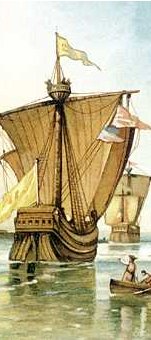
|Home| |Pre-American Settlement| |American Settlement--Civil War| |Late Nineteenth Century|
|Early Twentieth Century| |World War II and the Fifties| |Sixties--Present| |City Histories| |About|









 |
Oil, Fortune, and Scandal Kevin ChenMargaret Leslie Davis, a graduate of Georgetown University,
is an author and a lawyer in The transition in the Born in 1856, in the state of Wisconsin, Edward Laurence Doheny was a
brilliant child, graduating from his high school as the valedictorian at
fifteen. Margaret L. Davis begins her biography of Doheny with the roots of his
career as a young land prospector working with the U.S. Geological Survey
Department. After this, Doheny turned to land prospecting in the West. He primarily
focused on silver and gold mining. His first mining ventures began in the Black
Hills of South Dakota and in New Mexico. Engaging in partnership with Charles
Canfield, Doheny initially had some success; however, as time went on, economic
instability and striking workers drained Doheny and Canfield¡¦s finance,
bringing about the collapse of their mining venture. Shifting their attention
oil drilling, Doheny and Canfield transferred their energy to developing an oil
company in southern California. Doheny¡¦s fate was altered forever when he
discovered a hole oozing with a substance¡Xtarry exude¡Xwhich, he learned, could
be mixed with soil to create black, combustible oil. Seeing unlimited potential
in his discovery, Doheny expressed his joy: ¡§I had found gold¡Ksilver¡Klead, but
this ugly-looking substance¡K[was] more valuable than any or all of these
metals.¡¨ 2 Doheny
and Canfield capitalized upon this golden opportunity to begin drilling and
extracting tarry exude and turning them into barrels of oil, which the men sold
to nearby factories below market price. The ingenius Doheny also designed a
device¡Xthe oil derrick, an oil drilling machine¡Xwhich he utilized to start off
his oil venture in California. With tremendous growth and efficiency, Doheny
and Canfield¡¦s oil company prospered and transformed the source of energy used
in automobiles and railroads from coal to petroleum. Their achievements and
triumph in the Californian oil industry would lay a path for many to follow and
launch the Californian petroleum industry forward. Bordering
the vast state of California, Mexico lacked a stable economy. Deprived of a
transportation network, Mexico lacked the factors necessary to stimulate
industrial and national growth. Meanwhile, Edward Doheny had discovered a
massive source of oil in the Gulf Coastal Plains near Tampico. Determined to
acquire and sell the oil of Tampico, Doheny and a small group of men embarked
on a journey to the unexplored, oil-rich territories of Mexico. Mexican
President Porfirio Díaz further encouraged Doheny¡¦s business venture as he
believed these Americans would stimulate the Mexican oil industry and educate
the common Mexican people. Doheny boldy gambled with the expansion of his oil
operations into the ¡§Faja de Oro¡¨ (Golden Lane), with its myths of containing
¡§oceans of oil.¡¨ 3 His courage and decision proved to be correct; Doheny¡¦s eyes were opened
to unprecedented wealth and, with his elite plutocratic status, Doheny
inevitably became influential in Mexican politics as well. Doheny reigned over
the Mexican petroleum industry for many years¡Xthe Mexican Petroleum Company,
with roots extending from the northern part of Doheny¡¦s Pan American Petroleum
and Transport Company in California. However, Doheny¡¦s domination of the
Mexican petroleum industry came to a halt, when foreign competition and Mexican
political turmoil forced him to sell his Mexican Petroleum Company and turn his
attention back to California. Although Doheny lost possession of Mexican oil
reserves, his profit had been magnificent and his reputation¡Xas an oil tycoon
and leading capitalist¡Xwould rise dramatically throughout the United States. In the midst of Mexican political instability, President Porfirio Diaz was
overthrown by General Victorio Huerta, who in turn was dethroned by Venustiano
Carranza, assassinated a year later. Back in the United States, with the
inauguration of President Harding came his pro-oil platform and his ¡§oil
cabinet¡¨¡Xa group of advisers supporting wealthy capitalists and large privately
owned oil enterprises. 4 Among the cabinet members was Secretary Albert B. Fall, Edward Doheny¡¦s
close friend, who introduced Doheny to Harding. Having been victorious due to
the financial support by wealthy industrialists and capitalists, Harding acted
in accordance to the will of the elite of society. Having munificently donated
and purchased liberty bonds during the first World War, Edward Doheny,
naturally, was re-approached by the government when the navy needed funds.
Convinced, the oil tycoon donated large sums of wealth to the development of
the navy at Pearl Harbor. As a part of the plan of Harding¡¦s administration,
the Naval Petroleum Reserves, oil-rich fields set aside by the federal
government, were established in California to prevent the natural supply of
petroleum from being completely drained. The most famous one, Naval Reserve No.
3, was associated with the scandal that tainted Harding¡¦s presidency and his
cabinet administration. Edward Doheny¡¦s Pan American Petroleum and Transport
Company was granted rights to drill and extract oil from California Naval
Petroleum Reserve No. 3, located in Teapot Dome, Natrona County; hence the
¡§Teapot Dome¡¨ scandals. In Wardman Park Hotel, New York City, Edward Doheny Jr. was ordered by his
father to obtain one hundred thousand dollars in cash and give the money to
Secretary Albert B. Fall in return for a promissory note. Information leaked
and was publicized greatly by the media. The people of United States cried
corruption, and the federal government investigated this scandal. Doheny and
his son were indicted for bribery. As time passed, the case eventually went to
the Supreme Court as U.S. v. Albert Fall and Edward Doheny. Numerous
trials ensued; Doheny insisted that the money was a loan to an old friend,
while Fall claimed his innocence as well. Denounced by prosecutor Owen Roberts
as ¡§criminal conspirators¡Kwho intended to defraud the government,¡¨ Doheny
suffered similar caustic criticisms and bombardments from the public and media.5
In the final verdict, Judge
Hitz ruled Edward Doheny free of bribery accusations. Ironically, Fall was
ruled guilty despite similar evidence and testimonies. Weakened by the constant
battering by the media and government, Edward Doheny¡¦s remaining spirits
completely broke down when his thirty-six-year old son, Ned Doheny, was
assassinated by a family confidant. Doheny¡¦s intrepid life ended soon following
his son¡¦s departure; in 1935, he passed away at age 79, leaving behind his
heroic, philanthropic, and tragic legacy. A book centered around Edward Doheny, Margaret L. Davis¡¦s Dark Side of
Fortune truly fascinates readers with the adventurous life and successful
business ventures of Doheny, the ¡§Emperor of Oil.¡¨ 6 Margaret Davis believes Doheny deserved greater reputation and a more
renowned status. Davis views him as an important character in history who
unlocked the petroleum industry for future generations, leaving behind his
magnificent legacy¡Xhis philanthropy and his vast oil empire. Admiring Doheny¡¦s
bold and triumphant oil ventures in California and Mexico, Davis assumes that
the key to ¡§progress and economic expansion¡¨ lies in the visions and legacy of
Doheny. 7 Througout the book, In
his critique of Davis¡¦s Dark Side of Fortune, Christopher J. Castaneda
writes that Phillip
Payne, from the Department
of History at St. Bonaventure University, praises Margaret
Leslie Davis does an amazing job of capturing the significant moments of
Doheny¡¦s career and personal life. Having lost a great primary source due to
Estelle Doheny¡¦s burning of letters and documents, Davis still manages to
conduct research and discover hidden sources to assemble a complete and
enrapturing biography. Her biography exhibits remarkable organization as she
shifts from one phase of Doheny¡¦s life into another. Davis, while placing these
events in sequence, incorporates elements from Doheny¡¦s personal life and his
emotions into the biography as well. Davis supports her argument well and
protects her belief that Doheny deserves to be among the prestiged ranks of
Carnegie, Rockefeller, Vanderbilt, and other renowned industrialists due to his
great ¡§contribution to the industrial wealth of the nation¡¨ 11 Providing the requisite background
information to understanding her subject¡¦s life, Davis collects a multitude of
sources and weaves Doheny¡¦s into an informative and refined biography. The
petroleum industry in California finds its roots and origins in the eastern
United States¡Xmainly attributed to the effects of rapid industrial growth. The
Standard Oil Company was founded in 1870 by John Rockefeller in the eastern
United States; it set the precedent and model for the oil companies and helped
shape the petroleum industry in California. In 1925, ¡§one of the most
sensational deals in oil history¡¨ was made when Pan American Petroleum and
Transport Company sold a majority of its voting stock to the Standard Oil
Company of Indiana.12 Doheny¡¦s petroleum industry in California became a part of the larger oil
empire spanning the nation. The customer industries¡Xthe automobile and railway
industries¡Xof petroleum further demonstrate Eastern United States¡¦ influence on
Californian petroleum industry. The invention and popularization of the
automobile, promoted by the innovation of Ford¡¦s Model-T, created enormous
needs for gasoline, stimulating the oil economy in California. From teast to
west, the extension of the railroad network across the nation, with its
consequent change from coal to oil, raised high demands for petroleum in
California. These changes allowed Doheny¡¦s Pan American Petroleum and Transport
Company to dominate commerce and business in the West; however, Doheny¡¦s oil
enterprise owes much of its success to the eastern United States¡¦ advancement. However,
the petroleum industry in California has grown independently and distinctively
from its counterparts in the nation. Expanding his oil empire from California
into Mexican territory, Doheny was able to establish a giant oil empire in a
foreign nation and within domestic boundaries. As the leading figure of the
petroleum industry in California, Edward Doheny possessed power that far
surpassed that of any other businessman¡Xhe had influence in not only the United
States¡¦ government, but also in the Mexican government. The geographical
location of California causes Californian businessmen and industries to be
closely associated and tied to the Mexican economy and businesses. Internal
relationships, however, differed drastically from international relationships.
During the early twentieth century, both President Roosevelt and Taft actively
indulged in the practice of trustbusting. Among the most famous trustbusting
cases was the ¡§most significant event in oil industry¡K[the] dissolution of
Standard Oil Trust in 1911¡¨; however, Californian petroleum companies avoided
such tragic fate.13 Such fortune is due to the nation¡¦s capital being positioned on the East
coast¡Xthose trusts and companies are more closely involved with the government,
and thus were under closer watch of the trustbusters. Determining from history
and events, Margaret Davis views California as important to the rest of the
United States in numerous ways. The California Naval Petroleum Reserves were
set up to preserve the oil supply, while oil companies in other states lacked
codes to regulate the petroleum industry. This measure provided stability in
the American oil economy and allowed the United States to be temporarily free
of the OPEC¡¦s (Organization of Petroleum Exporting Countries) oil monopoly in
the world market. Furthermore, these influential capitalists aid in
international discussions as well as helping to mediate between these American
countries. These Californian industrial giants and their ventures in Mexico
have helped establish stronger ties between the Mexico and the Unitd States. Although
Edward L. Doheny remains in history textbooks as the man behind the Teapot Dome
Scandal, Margaret L. Davis defies history textbooks and redefines Edward Doheny
as an individual who bravely ventured into the unknown and built, brick by
brick, an ¡§empire of oil¡¨ in California and Mexico.14
Although not as prestigious or prominent as his predecessor John D.
Rockefeller, Doheny nevertheless deserves a spot among the great capitalists
and captains of industries of his era. He planted the seeds of prosperity into
the soil of California and Mexico, nurtured them into a vast oil empire, and
bestowed his legacy upon future generations¡Xthe heirs of his philanthropy and
the beneficiaries to the firm industrial foundation which has propelled and
sustained California¡¦s economy. 1. Davis, Margaret
Leslie. Dark Side of Fortune. Univesity of California Press: The Regents
of University of California, 1998. 283. 2. Davis, Margaret
Leslie. 23 3. Davis, Margaret
Leslie. 71. 4. Davis, Margaret
Leslie. 122 5. Davis, Margaret
Leslie. 205. 6. Davis, Margaret
Leslie. 25. 7. Davis, Margaret
Leslie. 288. 8. Castaneda,
Christopher J. ¡§Fall 1999, Volume 45, Number4¡¨. The Journal of San Diego
Histroy 1999. 01 June 2008.
<http://www.sandiegohistory.org/journal/99fall/dark.htm>. 9. Payne, Phillip.
¡§The Other Side of the Scandal¡¨. H-Net Reviews 1998. 01 June 2008. <http:
//www.h-net.org/reviews/showrev.cgi?path=103291006196219>. 10. Payne,
Phillip. 11. Davis,
Margaret Leslie. 283. 12. Davis,
Margaret Leslie. 186. 13. Davis,
Margaret Leslie. 187. 14. Davis,
Margaret Leslie. 192. |